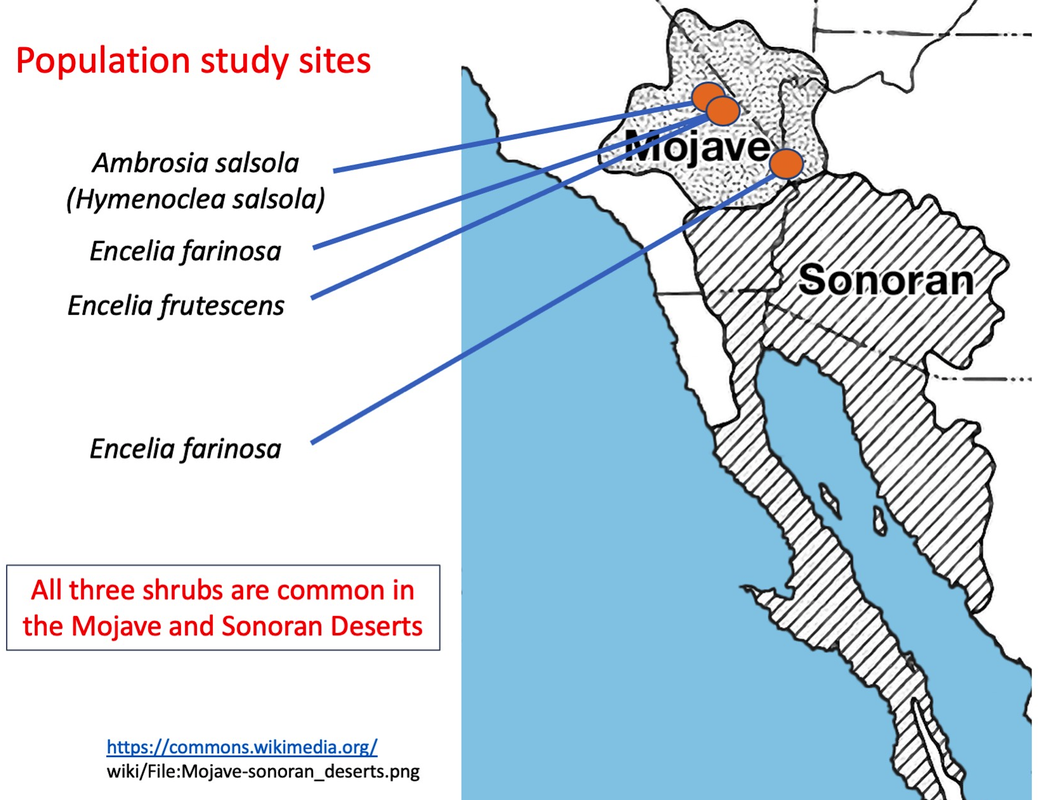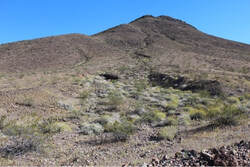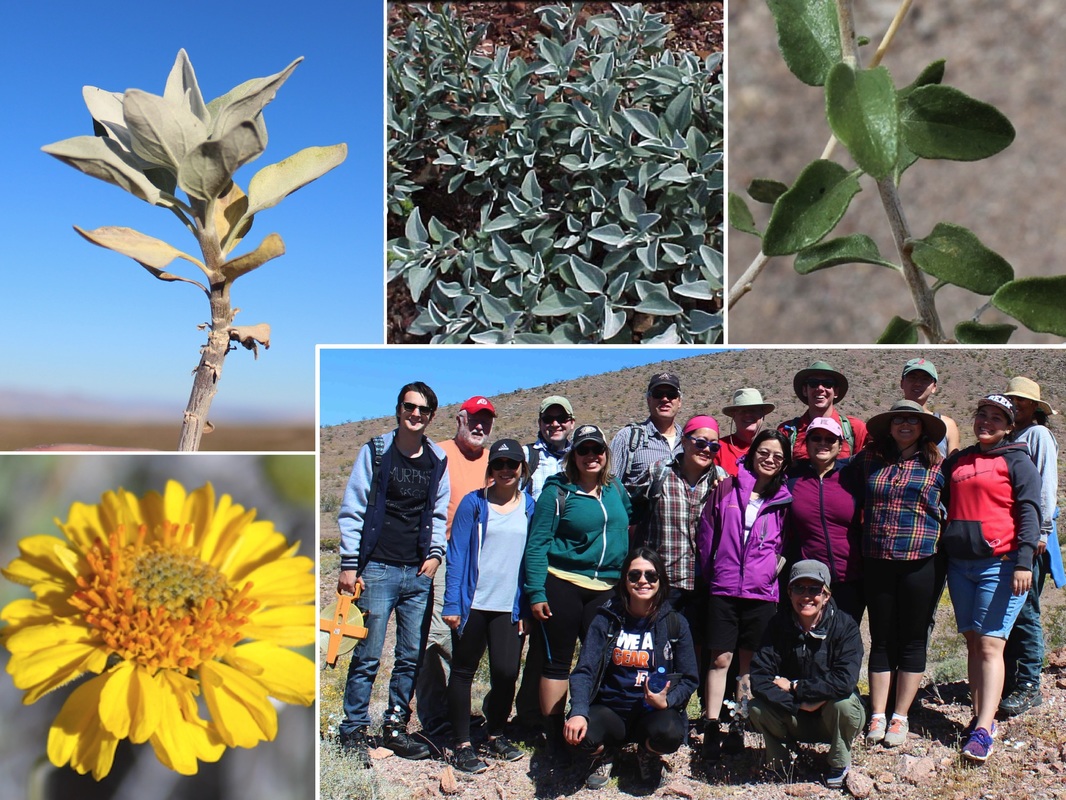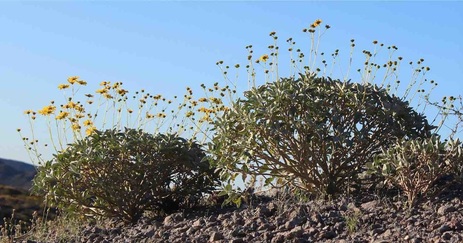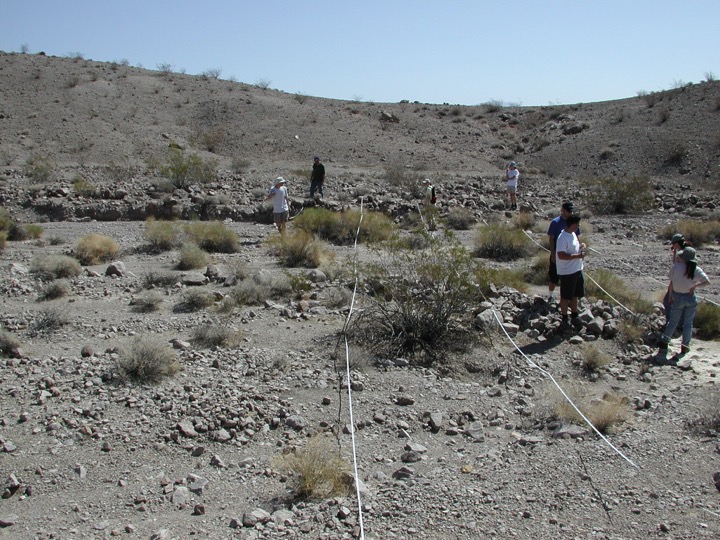Encelia farinosa, Encelia frutescens, and Ambrosia salsola in the Mojave Desert
|
Since 1973, Jim Ehleringer and colleagues have studied the ecology, ecophysiology, and population dynamics of Encelia farinosa, Encelia frutescens, and Ambrosia salsola. These are dominant drought deciduous shrubs in the Mojave and Sonoran Deserts. Our research describes the distributions, ecology, and ecophysiology of these species with respect to adaptations, competitive interactions, phenology, life history, and slope-wash habitat preferences.
Since 1980, we have also monitored population dynamics and eophysiology of Encelia farinosa, Encelia frutescens, and Ambrosia salsola. With long-term data, we can answer questions about relationships among fitness, physiology, life history, life expectancy, climate change, the current 'megadrought', and ENSO/PDO. |
